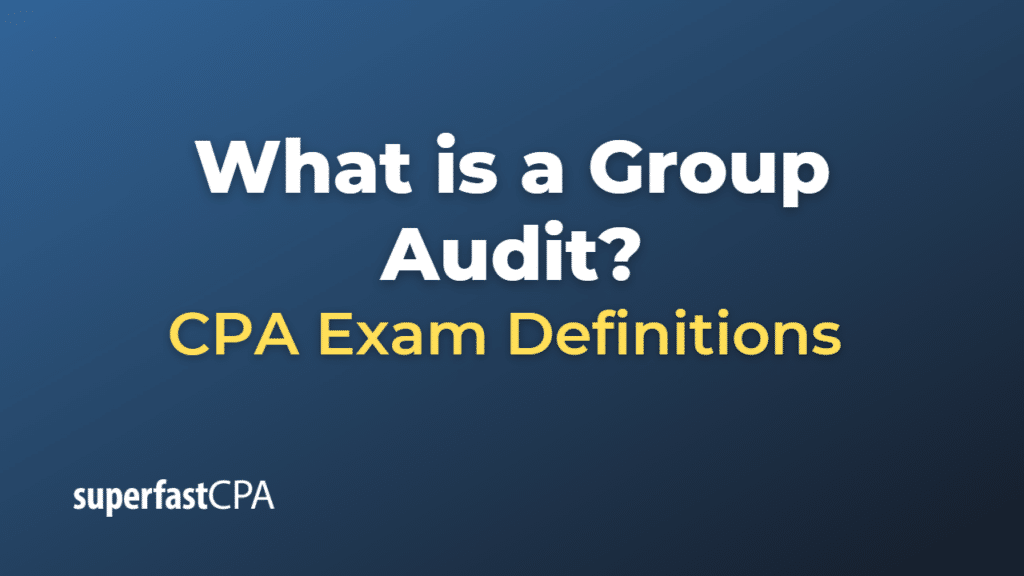Group Audit
A group audit refers to an audit of consolidated financial statements where the parent company and its subsidiaries are viewed as a single economic entity or ‘group’. The group audit is often conducted by the parent company’s auditor, known as the group auditor, and it encompasses the financial information of the parent company and its subsidiaries.
The group audit is necessary because businesses often operate through different legal entities or across different geographical locations. For a complete and accurate view of the group’s financial health, auditors must assess financial statements at both the parent and subsidiary level.
Here are a few key elements of a group audit:
- Planning: The group auditor must understand the structure of the group, identify significant components (individual entities within the group that are of individual financial significance to the group), and determine the type of work that needs to be done on the financial information of the components.
- Component Auditors: In some cases, the group auditor might use the work of other auditors who audit the financial statements of the subsidiaries (component auditors). The group auditor needs to communicate with these component auditors and provide them with necessary instructions about the audit.
- Risk Assessment and Materiality: The group auditor must assess the risk of material misstatement at the group level and component level, and determine materiality levels for planning and performing the audit.
- Review and Evaluation: The group auditor must review and evaluate the work done by the component auditors and integrate their work into the audit of the group financial statements.
- Reporting: The group auditor issues an audit report on whether the group financial statements are presented fairly, in all material respects, in accordance with the applicable financial reporting framework.
In conducting a group audit, auditors must follow the standards established by the relevant auditing bodies. For example, the International Auditing and Assurance Standards Board (IAASB) has established ISA 600, which deals specifically with special considerations in a group audit.
Example of a Group Audit
Let’s say we have a multinational corporation called XYZ Corporation, which is based in the United States. XYZ Corporation is the parent company, and it owns several subsidiaries around the world, including:
- XYZ Europe, based in Germany
- XYZ Asia, based in China
- XYZ South America, based in Brazil
The task is to conduct a group audit of XYZ Corporation’s consolidated financial statements, which include the financial information of the parent company and all its subsidiaries.
The group audit would proceed in stages:
- Planning: The group auditor identifies the structure of XYZ Corporation, recognizing that there are significant components in Germany, China, and Brazil. The group auditor decides that the financial information of these components needs to be audited because they are of individual financial significance to the group.
- Component Auditors: Because the subsidiaries are in different countries with different languages and local laws, the group auditor decides to use component auditors who are more familiar with these local conditions. The group auditor provides these component auditors with instructions about the audit.
- Risk Assessment and Materiality: The group auditor assesses the risks of material misstatement for the entire group, as well as for each subsidiary. They also decide the materiality levels for the audit.
- Review and Evaluation: Once the component auditors have completed their audits, the group auditor reviews and evaluates their work. If necessary, the group auditor might ask the component auditors to perform additional procedures.
- reporting: Finally, after integrating the component auditors’ work with their own audit work on the parent company, the group auditor issues a report on whether XYZ Corporation’s consolidated financial statements are presented fairly, in all material respects, in accordance with U.S. Generally Accepted Accounting Principles (GAAP).
This example illustrates the complexity of a group audit. The group auditor needs to coordinate the work of several auditors, often across different time zones, languages, and legal jurisdictions, to form an opinion on the group’s consolidated financial statements.













